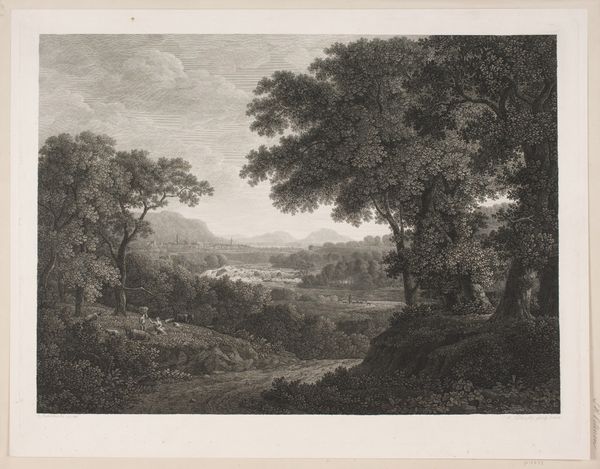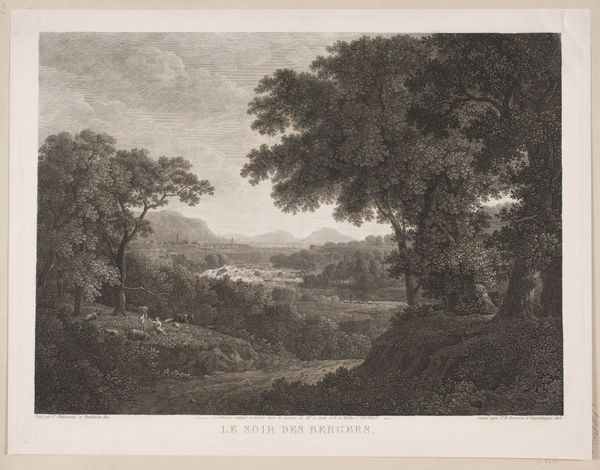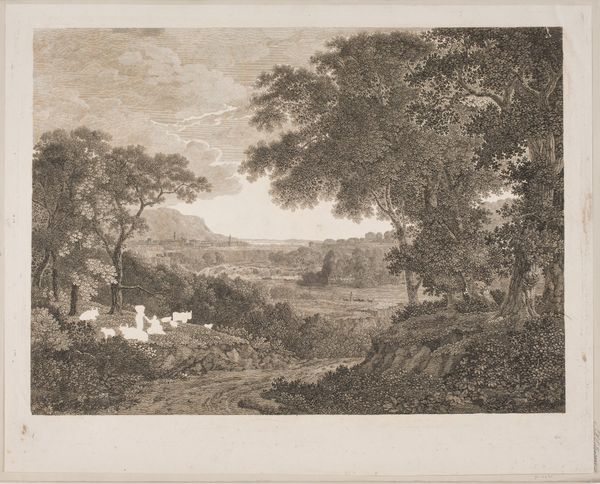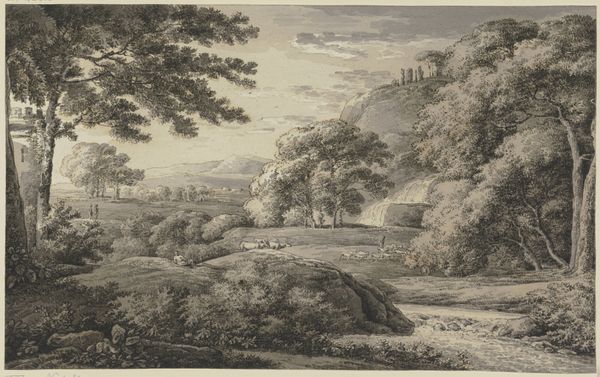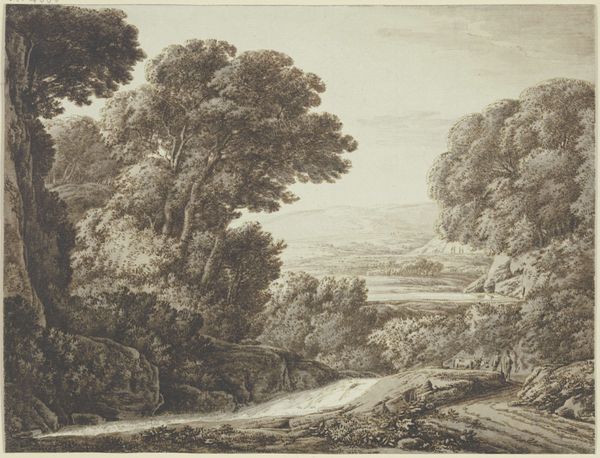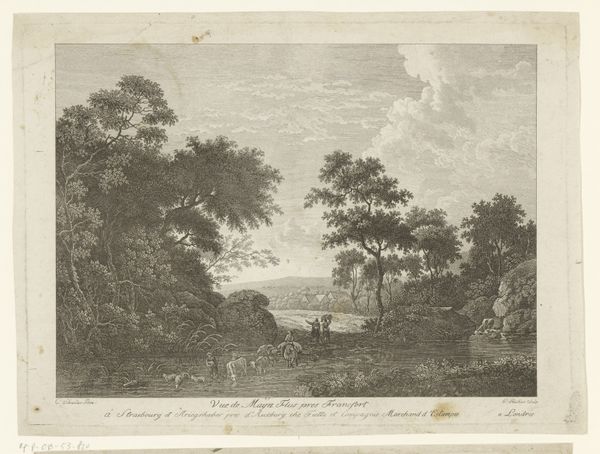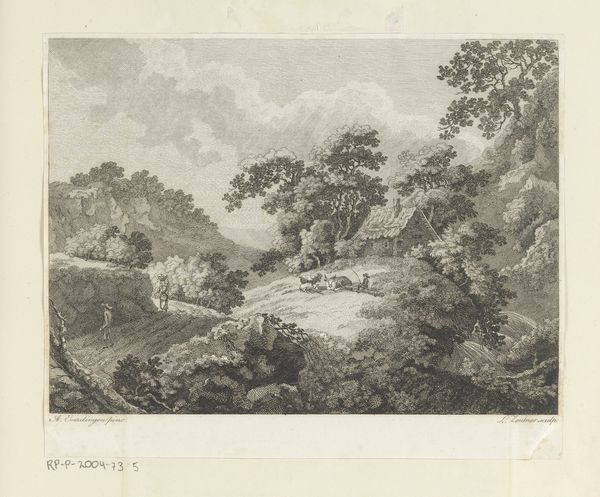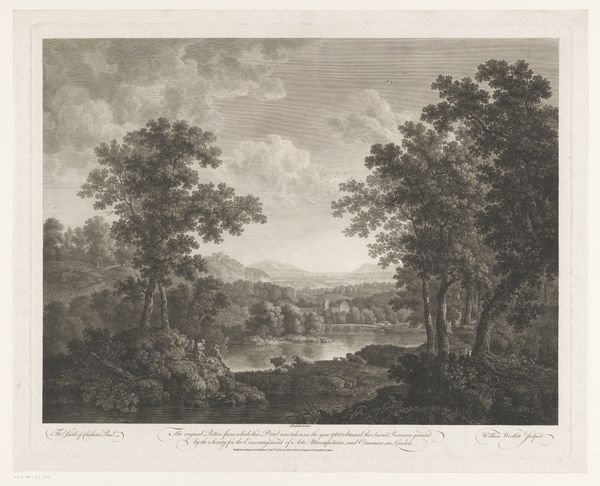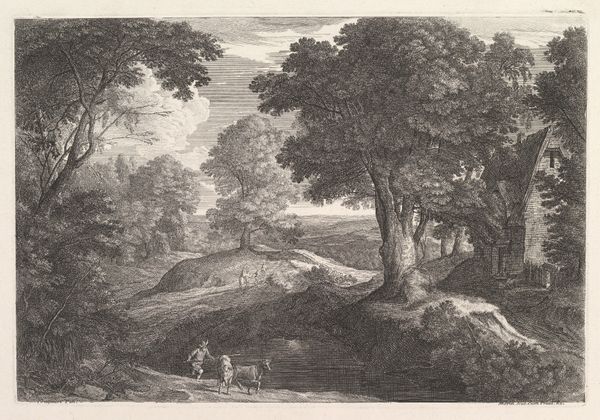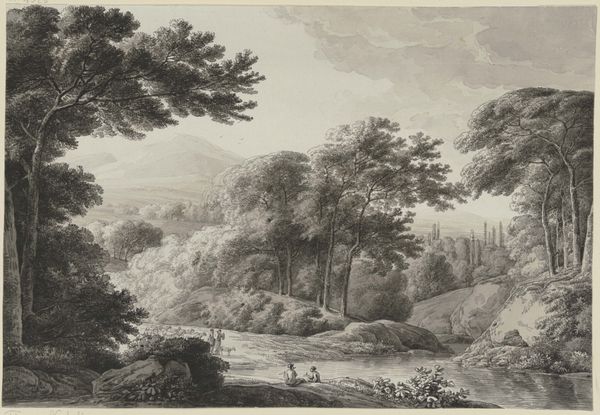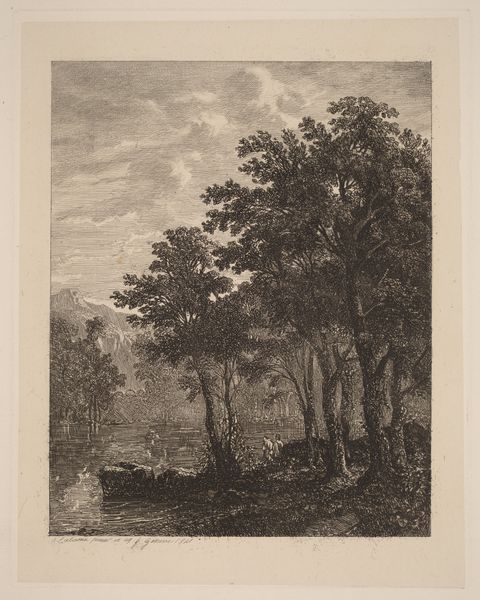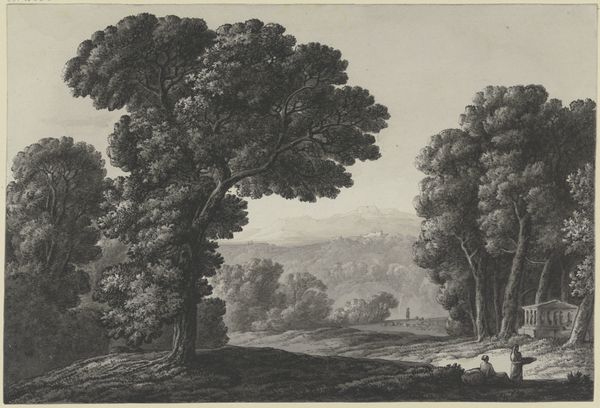
print, engraving
#
natural shape and form
#
light pencil work
#
natural formation
#
snowscape
# print
#
pencil sketch
#
charcoal drawing
#
charcoal art
#
carved into stone
#
engraving
#
watercolor
#
shadow overcast
Dimensions: 463 mm (height) x 610 mm (width) (plademaal)
Curator: This is "Le Soir des Bergers," or "The Shepherd's Evening," an engraving made around 1828. Look at the way the artist has depicted the fading light in this pastoral scene, currently residing at the SMK, Statens Museum for Kunst. Editor: It strikes me as quite melancholic. The light, or lack thereof, seems to cast a rather somber mood over the entire landscape. Almost as if it is aware of an impending dramatic weather event or societal transition, with these quiet observers unaware of the macrocosm at play. Curator: Yes, but the technical proficiency is what captivates me. Observe how the artist used the engraving technique to build up textures, the density of the foliage on the trees, the play of light and shadow across the land – a fascinating orchestration of visual elements creating an atmospheric unity. It achieves pictorial depth without overt colour. Editor: Agreed. But doesn’t this idyllic portrayal mask the realities of rural life at the time? Perhaps these shepherds are symbolic of those often omitted or mistreated: the peasants whose livelihoods were precarious, existing at the mercy of landowners. What is missing from the romantic image? Curator: An intriguing question, yet perhaps secondary. If we examine the structure of the piece, notice how the diagonal lines guide the eye across the canvas, the spatial relationships creating balance? These features work to create its aesthetic effect, a visual harmony irrespective of its contextual considerations. Editor: Visual harmony, maybe. But even in its muted palette, the engraving prompts reflections about the lives it only alludes to. Consider the gender dynamics potentially on display. What societal pressures did those individuals live under, and how do those affect what’s depicted and, crucially, what isn’t? Curator: Your argument is intriguing. I still suggest that analyzing the formal structures allows for a wider view of how art communicates. Without knowing the language of composition, all meaning is lost. Editor: Perhaps that’s why it’s crucial that art is both seen and understood – both intrinsically, like you propose, and extrinsically, like I advocate, or are we losing the story for which is the image merely a chapter? Curator: An elegantly made point, highlighting how different lenses provide unique encounters. Editor: Likewise, a final note – food for thought that might bring to surface novel, but related interpretations.
Comments
No comments
Be the first to comment and join the conversation on the ultimate creative platform.
